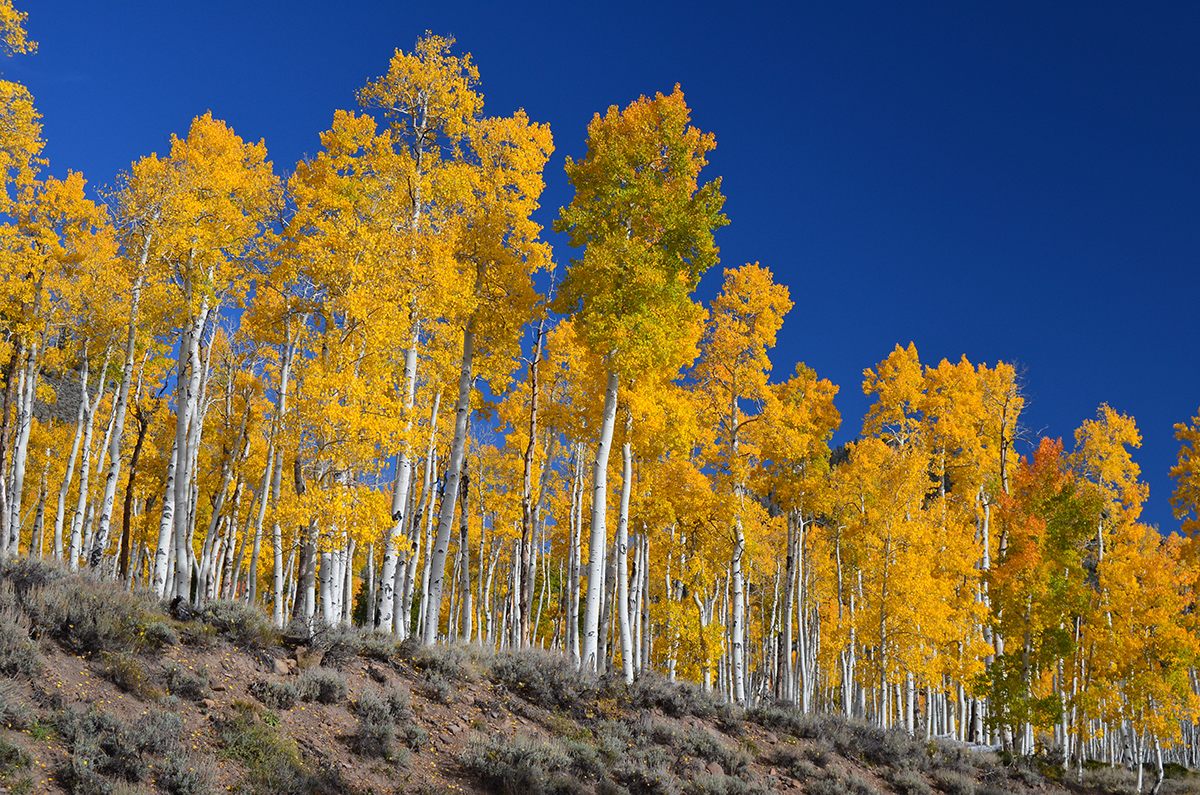Mule Deer Are Eating Away at the Most Massive Living Thing in the World
A special aspen grove needs the chance to regenerate.

These are unpredictable times for Earth’s biggest organisms. A 90-acre fungus in Michigan has been growing and now, researchers say, a grove of 47,000 genetically identical trees in Utah has been shrinking.
That would be Pando, the Trembling Giant of Fishlake National Forest. Because all of its trees are genetic clones, it is considered a single organism, and at nearly 7,000 tons is Earth’s most massive living thing. “Pando” is Latin for “I spread,” but maybe it doesn’t any more. As The New York Times explains, new saplings don’t appear to be replacing older trees as they die off, thanks in large part to the mule deer, elk, and cattle that have been steadily eating away at the “forest of one tree.” Aerial photos in a new PLOS One study show how the forest appears to be retreating from the inside as older trees die off.
The researchers diced the forest into three sections to diagnose its problems. One was openly accessible to animals. Another was cordoned off. The third was fenced off and, in some parts, boosted with shrub removal and other methods of encouraging arboreal growth. They found that the forest was capable of regeneration, and that only keeping out the herbivores could allow this to happen.

Not surprisingly, this is all our fault. The building of campgrounds and cabins that attract wildlife, and the banishment of carnivores such as wolves, have made the region a playground for animals such as mule deer. Fencing off more than 100 acres of woods would be both impractical and unsightly, so lead author Paul C. Rogers of Utah State University told Science that he supports strategically reducing (i.e., hunting or culling) the local mule deer population.
There’s more at stake here than a natural wonder. Aspen is a keystone species; it is critical to the health and integrity of the entire ecosystem. Losing Pando’s quaking aspen could lead to an even more destructive ecological shakeup.






















Follow us on Twitter to get the latest on the world's hidden wonders.
Like us on Facebook to get the latest on the world's hidden wonders.
Follow us on Twitter Like us on Facebook